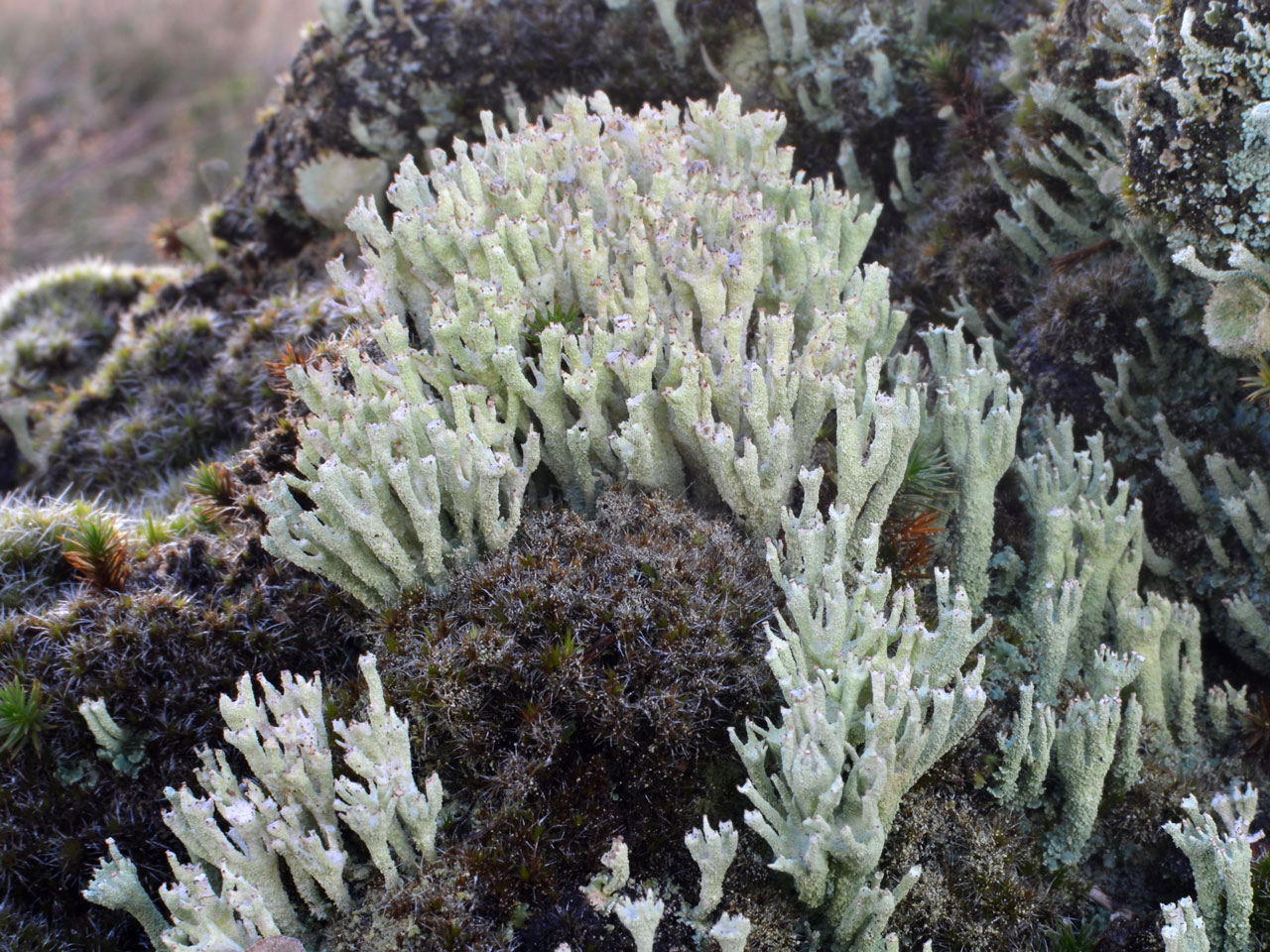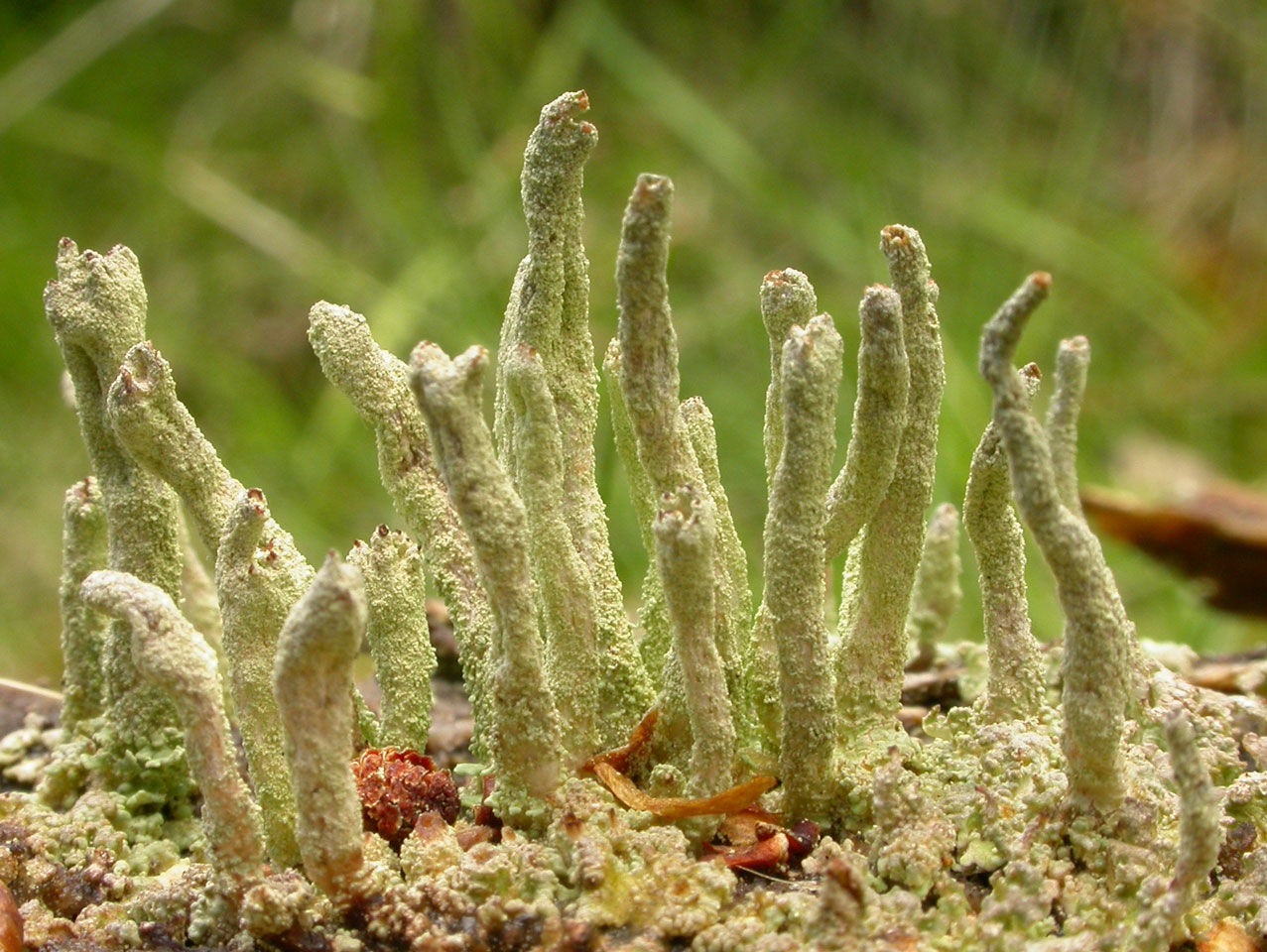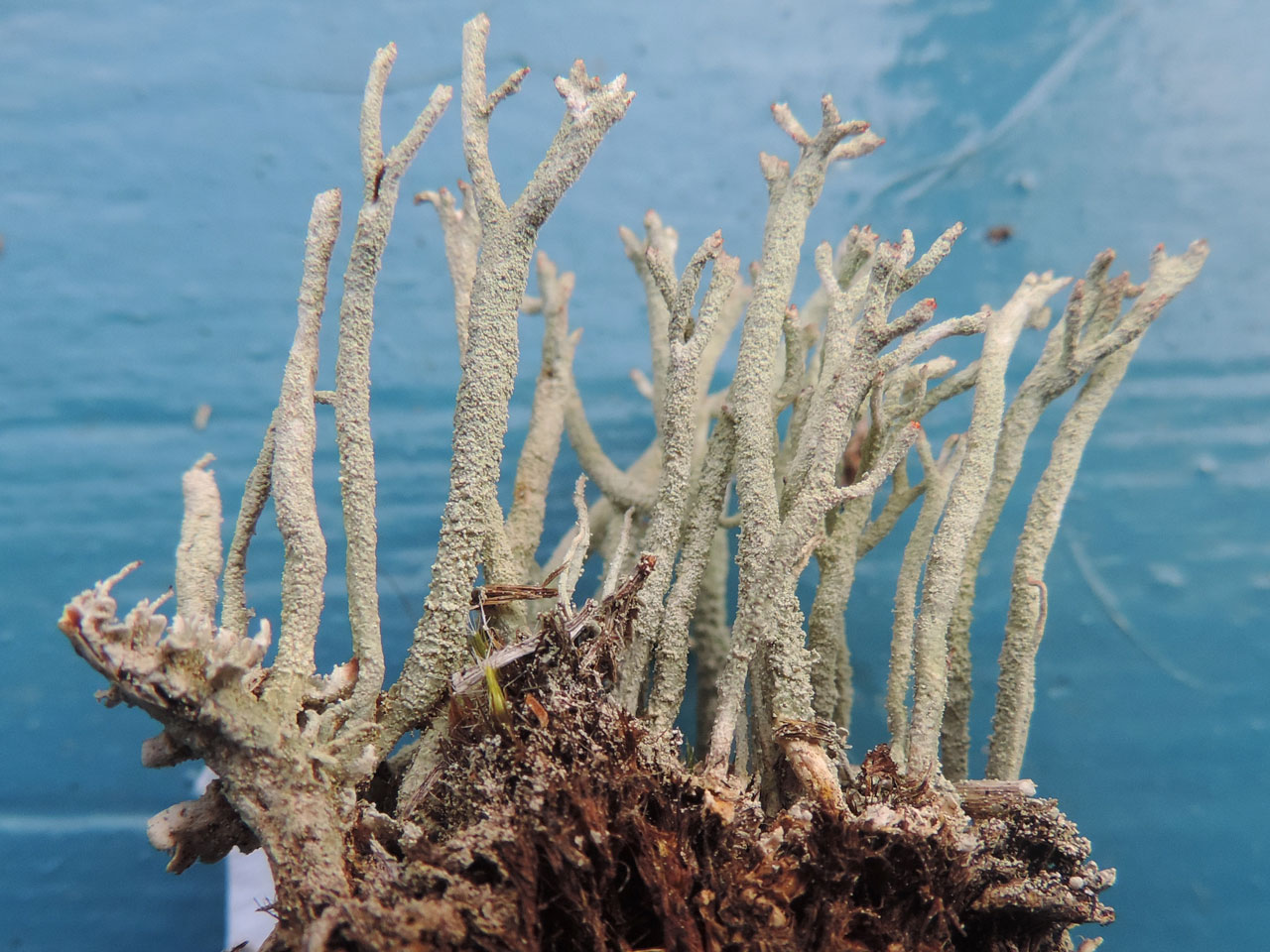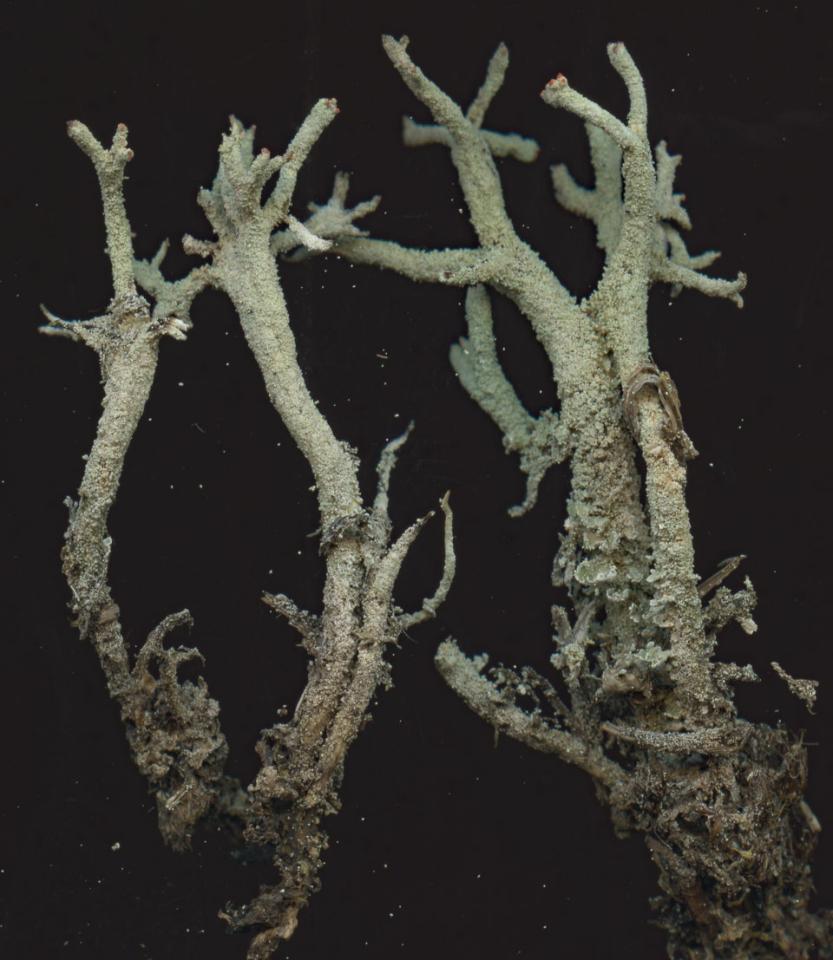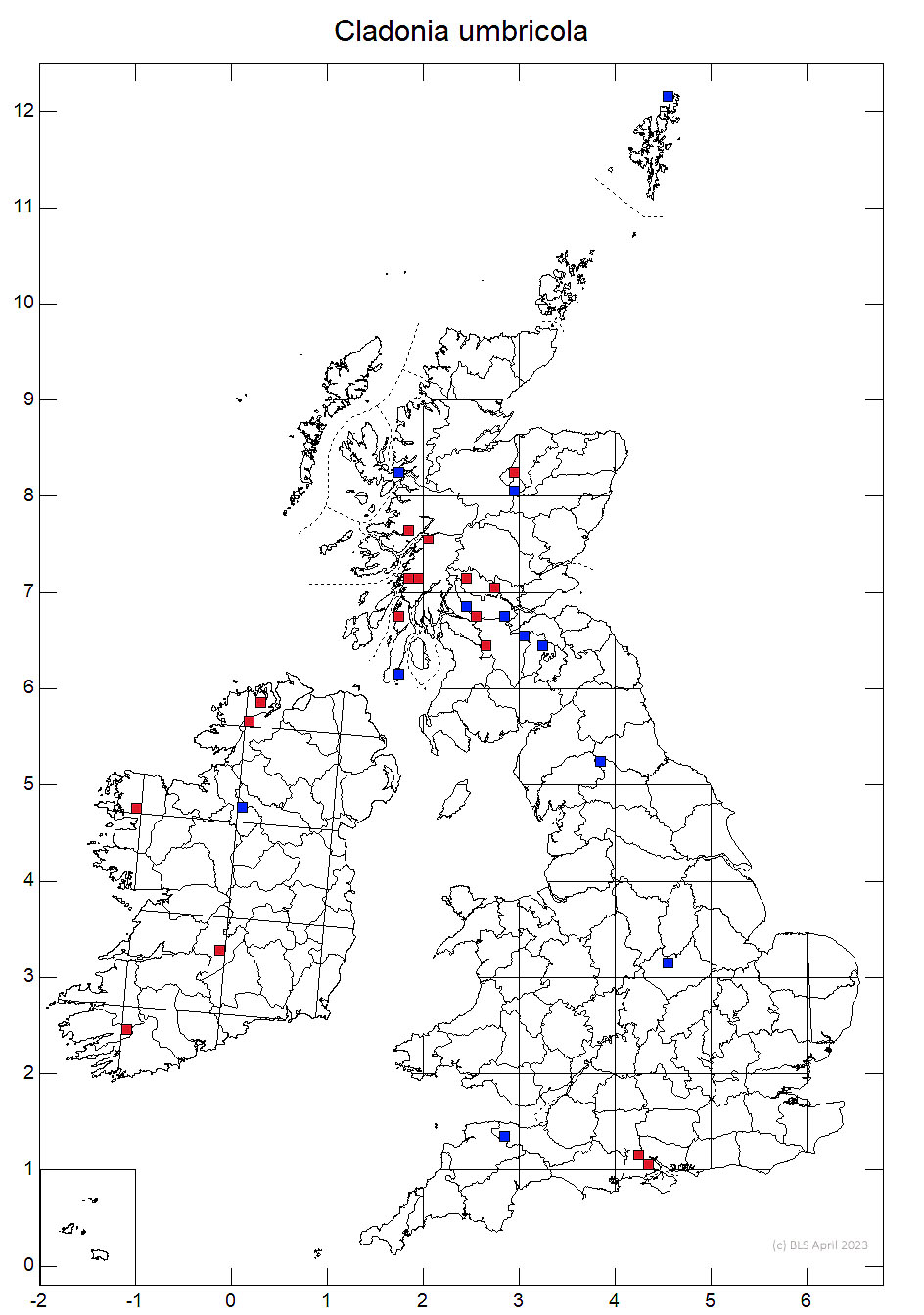Cladonia umbricola
A little understood lichen, which has been viewed as a squamatic acid (UV+ white) chemotype of Cladonia polydactyla, which normally has thamnolic acid (K+ yellow). Squamatic acid and thamnolic acid chemotypes commonly occur in the same Cladonia species. In many species these two chemotypes are not now regarded as being of any taxonomic significance (e.g. Cladonia squamosa and Cladonia glauca). If there were no morphological differences between the squamatic acid and thamnolic acid taxa, then it would be very likely that Cladonia umbricola was simply a chemotype of C. polydactyla. However, Ahti & Stenroos (2013) do describe a distinct taxon that significantly has both squamatic acid and thamnolic acid chemotypes, so is defined morphologically.
This is intermediate between Cladonia macilenta and C. polydactyla in appearance, having finer soralia than C. polydactyla but coarser than C. macilenta, with sparse or no squamules on the podetia like C. macilenta but with the podetia more branched than in C. macilenta and, unlike C. polydactyla, with cups absent or only small cups present. Conceivably some UV+ material actually is a squamatic acid morph of C. polydactyla, while those matching the morphology described by Ahti & Stenroos (2013) are Cladonia umbricola.
Similar to Cladonia polydactyla but has greener-grey podetia which are usually shorter (1–2 cm), farinose-sorediate to the base, with sparse or no squamules and mostly without corticate patches in the upper parts. The cups are rather narrow (to 2 mm diam.) with few or no marginal proliferations and the thallus is C–, K–, KC–, Pd–, UV+ white (squamatic acid) or C–, K+ yellow-orange, KC–, Pd+ yellow, UV– (thamnolic acid).
Treated as a variety of Cladonia polydactyla by James (2009), but as a separate species by Ahti & Stenroos (2013) and Burgaz et al. (2020). It appears to be closely related to C. polydactyla but further molecular studies are required considering the polymorphic nature of both taxa. Ahti & Stenroos (2013) record both squamatic acid and thamnolic acid chemotypes in Scandinavia, and define the taxa morphologically. What appears to be similar material with thamnolic acid has been found in Britain.
Recorded on decaying wood and bark, humus banks and amongst mosses on moist rocks, usually in deep shade.

Highland Scotland and W. Ireland, possibly also in the New Forest
Ahti, T. & Stenros, S. (2013) Cladonia. In: Nordic Lichen Flora, Volume 5 Cladoniaceae (ed. T. Ahti, S. Stenros & R. Moberg) 8-86. Uppsala: University of Uppsala.
Burgaz, A.R., Ahti, T. & Pino-Bodas, R. (2020) Mediterranean Cladoniaceae. Madrid: Spanish Lichen Society.
James, P.W. (2009). Cladonia. In: Lichens of Great Britain and Ireland(Smith, C.W., Aptroot, A., Coppins, B.J., Fletcher, A., Gilbert, O.L., James, P.W. & Wolselsey, P.A. eds): 309–338. London: British Lichen Society.
Pino-Bodas, R., Sanderson, N., Cannon, P., Aptroot, A., Coppins, B., Orange, A. & Simkin, J. (2021). Lecanorales: Cladoniaceae, including the genera Cladonia, Pilophorus and Pycnothelia. Revisions of British and Irish Lichens 19: 1-45. Link
Text by N A Sanderson, based Pino-Bodas et al (2021)
